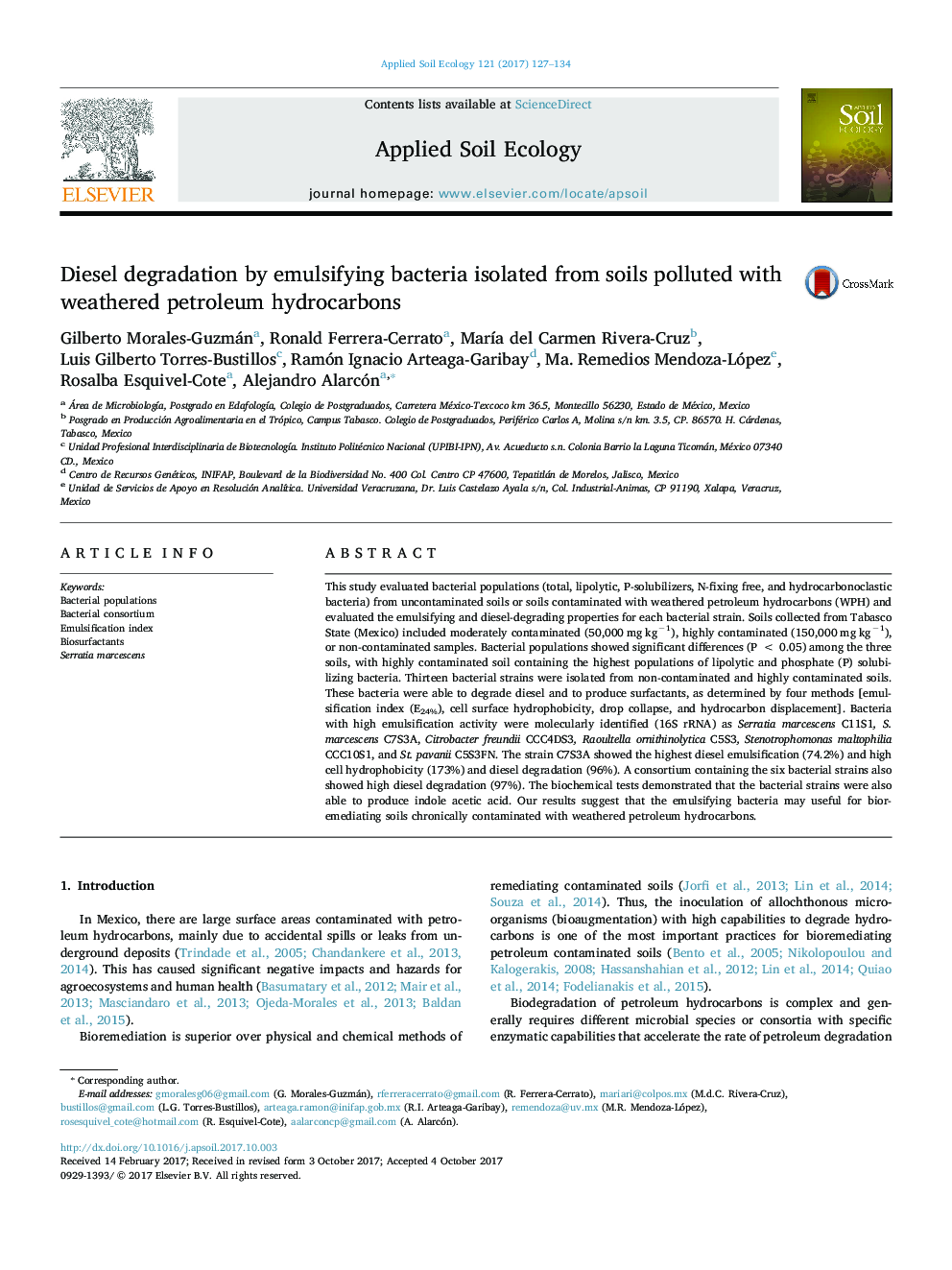| Article ID | Journal | Published Year | Pages | File Type |
|---|---|---|---|---|
| 5742551 | Applied Soil Ecology | 2017 | 8 Pages |
Abstract
This study evaluated bacterial populations (total, lipolytic, P-solubilizers, N-fixing free, and hydrocarbonoclastic bacteria) from uncontaminated soils or soils contaminated with weathered petroleum hydrocarbons (WPH) and evaluated the emulsifying and diesel-degrading properties for each bacterial strain. Soils collected from Tabasco State (Mexico) included moderately contaminated (50,000 mg kgâ1), highly contaminated (150,000 mg kgâ1), or non-contaminated samples. Bacterial populations showed significant differences (P < 0.05) among the three soils, with highly contaminated soil containing the highest populations of lipolytic and phosphate (P) solubilizing bacteria. Thirteen bacterial strains were isolated from non-contaminated and highly contaminated soils. These bacteria were able to degrade diesel and to produce surfactants, as determined by four methods [emulsification index (E24%), cell surface hydrophobicity, drop collapse, and hydrocarbon displacement]. Bacteria with high emulsification activity were molecularly identified (16S rRNA) as Serratia marcescens C11S1, S. marcescens C7S3A, Citrobacter freundii CCC4DS3, Raoultella ornithinolytica C5S3, Stenotrophomonas maltophilia CCC10S1, and St. pavanii C5S3FN. The strain C7S3A showed the highest diesel emulsification (74.2%) and high cell hydrophobicity (173%) and diesel degradation (96%). A consortium containing the six bacterial strains also showed high diesel degradation (97%). The biochemical tests demonstrated that the bacterial strains were also able to produce indole acetic acid. Our results suggest that the emulsifying bacteria may useful for bioremediating soils chronically contaminated with weathered petroleum hydrocarbons.
Keywords
Related Topics
Life Sciences
Agricultural and Biological Sciences
Ecology, Evolution, Behavior and Systematics
Authors
Gilberto Morales-Guzmán, Ronald Ferrera-Cerrato, MarÃa del Carmen Rivera-Cruz, Luis Gilberto Torres-Bustillos, Ramón Ignacio Arteaga-Garibay, Ma. Remedios Mendoza-López, Rosalba Esquivel-Cote, Alejandro Alarcón,
